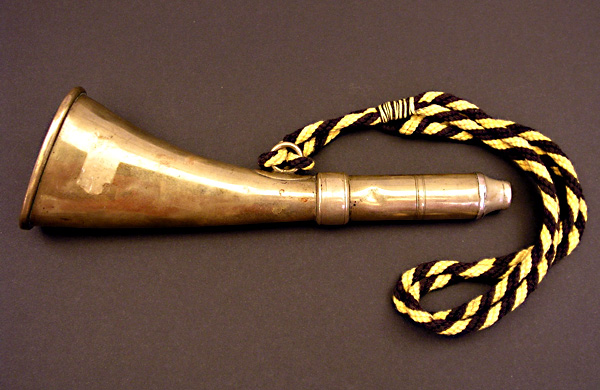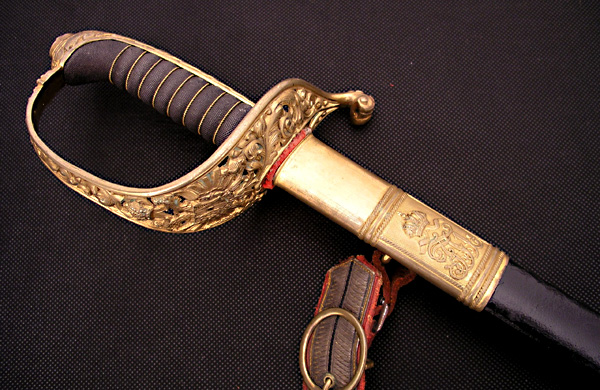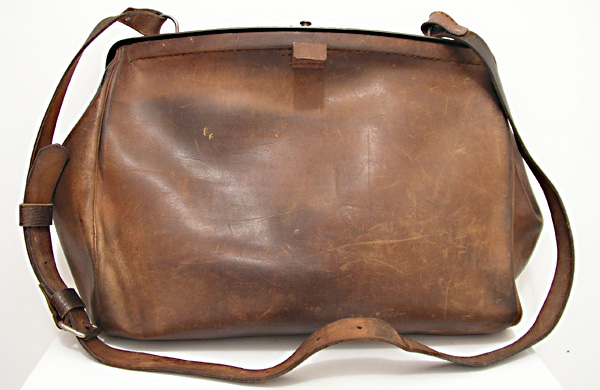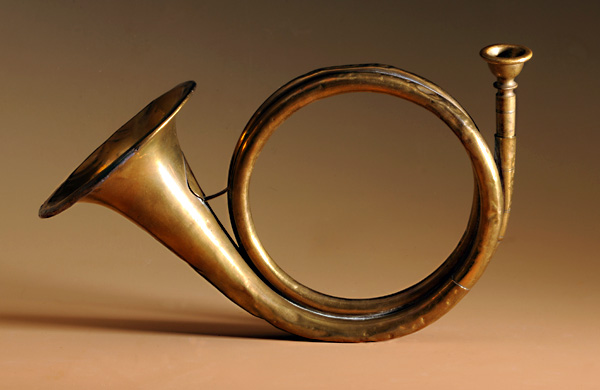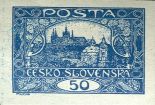Postal equipment
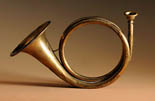
Post horns are the best known examples. Originally made of bull horns, post horns gradually became an integral part of the outfit of mounted couriers and postilions (mail coach drivers). Rather than being a mere accessory symbolising the Post, the post horn was a most practical tool. Couriers and drivers used a range of conventional signals as advance notice of their arrival to a postal station or post office; different signals informed the local personnel whether fresh horses (and how many) should be ready for change and that letter bags should be prepared to be loaded and passengers should be waiting to depart. Other signals indicated an accident, lost orientation in fog, or assault. Ancient express couriers sounded their horn to order town gate guards open the gate because the rights of the ruler's postal service prevailed over town rights. Signals on the road warned others to let postal couriers and mail coaches go first as they enjoyed the right of way. The materials preserved by the museum include late 18th-century post horns with a single turn of the tubing and post horns from the 1st half of the 19th century with two turns and ornamental cords and tassels in the Austrian colours (black and yellow). Simpler signal horns were also used by cross-country postmen and travelling post personnel in the 2nd half of the 19th century.
Replica wooden rattles, called clappers, are among the highlights of the sub-collection; they were used by a private postal service ("Lesser Post") in late 18th-century Prague and its suburbs (within 3 miles, or 21 km radius). Postmen used to sound the clapper as advance notice of arrival. The 1980s replicas were made for the Postal Museum by Brno-based leading museologist and ethnologist Ludvík Kunz, specialist in postal acoustic instruments.
Cold weapons and firearms were other elements of compulsory outfit of postal employees. Percussion pistols and more recently revolvers were the most common types of defensive firearms used by postal couriers and postilions. Firearms were also carried by postmen in certain locations, in most cases mountainous regions, in interwar and postwar Czechoslovakia. Unlike firearms, swords and sabres were carried by only those ranks of postal employees who became civil servants after 1850, as mere accessory to their compulsory uniform. They were replaced by civil service officer sabres in 1889. Other materials used as parts of the outfit of mounted couriers and pedestrian cross-country and community postmen include different types of bags.
![Postal museum [logo]](/PostMuzeum-theme/images/muzeum/logo_postal-museum.png)
